Table of Contents
Have you ever considered using epoxy flooring in your kitchen but wondered if it's the right choice? This versatile flooring option is not only durable and easy to maintain but also offers a range of benefits that make it ideal for kitchens.
From its resistance to stains and spills to its ability to handle heavy foot traffic, epoxy flooring could be the perfect solution for your kitchen. There are also some potential drawbacks to consider, such as slipperiness when wet and susceptibility to scratches.
In this article, we will explore the ins and outs of epoxy flooring in kitchens, including its types, benefits, drawbacks, and maintenance tips. So, if you're looking to upgrade your kitchen flooring, keep reading to find out if epoxy flooring is the right choice for you.

Epoxy flooring is a durable and seamless floor covering that provides a protective layer for various surfaces.
Its composition consists of resin and hardeners, which when combined, create a tough and resilient surface that can withstand heavy foot traffic and impacts. The seamless nature of epoxy flooring makes it ideal for environments where cleanliness and hygiene are essential, such as commercial kitchens, hospitals, and warehouses.
In addition to its durability, epoxy flooring is also resistant to chemicals and stains, making it a popular choice for garages and industrial settings. Homeowners can choose from a wide range of colors and designs, including metallic and flake options, to customize their epoxy floors to suit their aesthetic preferences.

The installation process of epoxy flooring involves applying multiple layers of epoxy resin onto the prepared floor surface to create a seamless and glossy finish.
This cost-effective method can transform plain concrete surfaces into sleek and durable flooring options.
Epoxy flooring comes in various types, including self-leveling, epoxy mortar, flake, and terrazzo flooring, each offering unique decorative finishes and protective qualities.
Self-leveling epoxy flooring is ideal for spaces that need a smooth, seamless surface, such as commercial kitchens or laboratories. It provides a glossy finish and is highly resistant to stains and chemicals, making it easy to clean.
Epoxy mortar flooring, on the other hand, is a more heavy-duty option, commonly used in industrial settings due to its exceptional durability and ability to withstand heavy machinery.
Flake flooring adds a decorative touch with its multi-colored vinyl chips, offering a textured surface that hides imperfections.
Terrazzo flooring, known for its elegant look, combines marble or glass chips with epoxy resin, making it a popular choice for high-end residential and commercial spaces.
Self-leveling epoxy flooring is a popular choice for high-traffic areas due to its seamless and durable nature, making it ideal for modern and functional designs.
This type of flooring not only provides a smooth and level surface, but its impact-resistant properties also ensure longevity and durability even in areas with heavy foot traffic. The self-leveling feature allows for easy installation, resulting in a seamless finish that is both aesthetically pleasing and highly practical. With a variety of modern design options available, self-leveling epoxy flooring offers versatility in creating a stylish and contemporary look for commercial spaces, industrial facilities, and residential settings alike.

Epoxy mortar flooring is known for its high strength and impact resistance, making it a durable choice for areas prone to heavy use and potential damage.
This type of flooring is particularly well-suited for environments that require robust flooring solutions, such as industrial facilities, warehouses, and manufacturing plants, where durability is essential. Its strength and impact resistance makes it ideal for withstanding the wear and tear of high-traffic areas.
Epoxy mortar flooring offers excellent protection against chemical spills, abrasions, and harsh cleaning agents, ensuring a long-lasting and easy-to-maintain flooring solution. It provides heat resistance, making it suitable for areas exposed to high temperatures, such as kitchens and food processing facilities, while also being a cost-effective option for businesses looking to invest in durable, low-maintenance flooring.
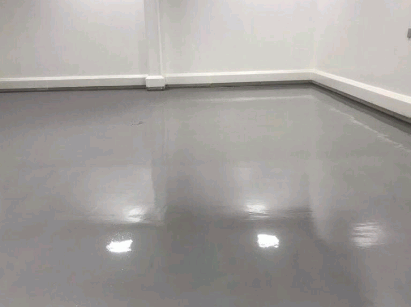
Epoxy flake flooring offers a decorative and slip-resistant surface, incorporating decorative flakes that enhance both the aesthetics and safety of the floor.
The application of these decorative flakes allows for a customizable design, offering a range of color options and sizes to create a unique look for any space. By seamlessly blending these flakes into the epoxy coating, the floor not only looks visually appealing but also gains a textured finish, providing excellent slip resistance. The seamless finish of epoxy flake flooring makes it easy to clean and maintain, as it is both stain-resistant and durable, ensuring longevity and beauty for years to come.
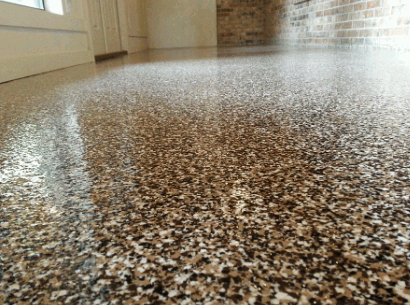
Epoxy terrazzo flooring combines durability with a timeless aesthetic appeal, making it a popular choice for both modern and traditional design schemes.
The waterproof properties of epoxy terrazzo flooring make it ideal for high-traffic areas such as commercial spaces, residential kitchens, and bathrooms. Its decorative finishes allow for endless customization options, ranging from classic patterns to modern geometric designs. Not only is epoxy terrazzo easy to maintain, but it also has a significant impact on the resale value of properties, adding a touch of luxury and sophistication.

Epoxy flooring offers numerous benefits, including durability, easy maintenance, chemical resistance, and a wide range of aesthetic options, making it a popular and cost-effective choice for various spaces.
This flooring solution is known for its ability to withstand heavy foot traffic, impacts, and harsh chemicals, ensuring a long-lasting and reliable option for both residential and commercial settings. Its seamless finish not only enhances the overall look of the space but also makes it incredibly easy to clean, saving time and effort. With epoxy flooring, you can choose from a variety of colors, patterns, and textures to match your design preferences, creating a sleek and modern look that is both functional and visually appealing.
One of the key benefits of epoxy flooring is its exceptional durability, offering a long-lasting and resilient surface that can withstand heavy use and high-traffic areas.
The impact resistance of epoxy flooring makes it a popular choice for areas prone to wear and tear, such as commercial spaces and industrial settings. Its protective qualities extend the lifespan of the flooring, reducing the need for frequent maintenance and replacement.
Epoxy coatings create a seamless and impermeable surface that is resistant to impacts, scratches, and abrasions, ensuring that the floor remains in top condition for years to come, even in demanding environments. This durability factor not only enhances the aesthetics of the space but also provides a cost-effective solution in the long run.
Epoxy flooring is known for its easy maintenance requirements, as it only needs regular cleaning with non-abrasive cleaners to preserve its glossy finish and protective qualities.
This type of flooring is highly resistant to stains, making it a popular choice for both residential and commercial spaces. To keep your epoxy floors looking great, it's recommended to sweep or dust mop regularly to remove dirt and debris that can scratch the surface. For spills or tougher stains, simply use a mixture of water and a gentle pH-neutral cleaner to maintain the shine without damaging the epoxy coating. By following these simple cleaning steps, your epoxy flooring will remain durable and aesthetically pleasing for years to come.
Epoxy flooring exhibits excellent chemical resistance, making it a suitable choice for environments where exposure to various chemicals and spills is common.
The unique composition of epoxy provides a protective barrier that prevents harmful substances from penetrating the floor surface. This feature not only safeguards the underlying concrete from corrosion but also minimizes the risk of chemical damage. The stain-resistant properties of epoxy flooring ensure easy clean-up of spills, maintaining a clean and hygienic environment. Its waterproof nature adds another layer of durability, enhancing the longevity of the floor and reducing maintenance costs over time. Epoxy's ability to withstand a wide range of chemicals makes it an ideal solution for industrial facilities, garages, laboratories, and other high-traffic areas.
Epoxy flooring offers a wide range of design options and decorative finishes, allowing homeowners to customize the look of their floors to suit their preferences and style.
With a glossy finish that adds a touch of sophistication and elegance, epoxy flooring can truly transform a space. Whether you prefer a sleek and modern aesthetic or a more rustic and industrial vibe, there are endless possibilities to explore. From metallic pigments to flake systems and quartz aggregates, the decorative appeal of epoxy floors is unmatched.
The versatility of epoxy allows for intricate patterns, vibrant colors, and even 3D effects, making it a popular choice for homeowners looking to elevate the overall design of their homes. The durable nature of epoxy flooring not only enhances the aesthetics but also increases the property value, making it a smart investment for long-lasting beauty and functionality.
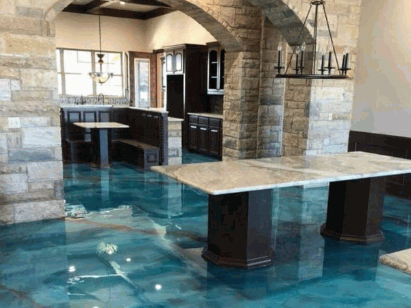
Epoxy flooring is a suitable choice for kitchens due to its resistance to stains and spills, easy maintenance, durability in handling heavy foot traffic, and moisture and water resistance properties.
This makes it an ideal flooring option for busy kitchen spaces where spills, stains, and moisture are common occurrences. With its seamless and non-porous surface, epoxy flooring prevents liquids from seeping into the material, making it easy to wipe up spills and clean with regular kitchen cleaning products. Its ability to withstand heavy foot traffic adds to its practicality in a kitchen setting, ensuring longevity and reducing wear and tear over time. The moisture-resistant characteristics of epoxy flooring also make it a great choice for maintaining a hygienic and visually appealing kitchen design.
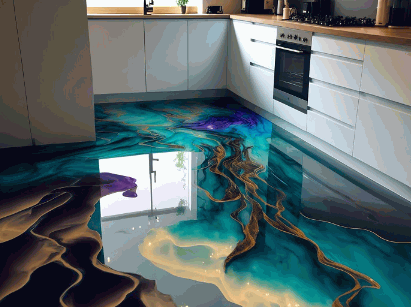
Epoxy flooring in kitchens offers excellent resistance to stains and spills, ensuring that any accidental messes can be easily cleaned without causing lasting damage to the floor surface.
This durable flooring option is specifically designed to withstand common kitchen spills such as food grease, coffee spills, red wine, and even harsh cleaning chemicals. The waterproof nature of epoxy flooring prevents any liquids from seeping into the surface, making it easy to wipe up messes with a damp cloth or mop. The seamless and non-porous surface of epoxy floors also prevents any residue from sticking, ensuring that cleaning is a breeze and maintaining a hygienic kitchen environment is hassle-free.
Maintaining epoxy flooring in kitchens is a doddle, requiring only regular cleaning with gentle non-abrasive cleaners to preserve its sleek appearance and protective layer.
To keep the glossy finish intact, it is recommended to sweep or vacuum the floor frequently to prevent the build-up of dirt and debris. In the event of spills, promptly wipe them up with a soft cloth or mop using a mild soap solution. Avoid using strong chemicals or abrasive tools as they can damage the epoxy coating. Placing mats at entry points can help trap dirt and prevent scratching. By following these simple cleaning practices, you can extend the lifespan of your epoxy kitchen flooring and keep it looking pristine for years to come.
Learn more: How To Clean A Resin Floor
Epoxy flooring is well-equipped to handle heavy foot traffic in kitchens, maintaining its durability and seamless finish even under constant use.
The unique properties of epoxy flooring make it a perfect choice for high-traffic areas like kitchens. Not only does it provide a durable surface that can withstand the wear and tear of daily use, but its seamless finish also contributes to easy maintenance and cleaning. This type of flooring ensures that the integrity of the surface remains intact, even when subjected to heavy foot traffic. Its ability to resist stains, impact, and moisture further enhances its longevity in busy kitchen environments, making it a practical and long-lasting flooring solution.
Epoxy flooring's moisture and water-resistant properties make it an ideal choice for kitchens where spills and moisture exposure are common occurrences, ensuring the longevity and integrity of the floors.
This resilient flooring not only adds a sleek and modern look to the kitchen space but also acts as a protective shield against water damage. Its impermeable surface creates a barrier that prevents water from seeping into the underlying structure, safeguarding against issues like mold and mildew. Epoxy flooring's ability to resist moisture makes it a practical solution for maintaining clean and hygienic kitchen environments. The seamless nature of epoxy floors minimizes the chance of water pooling and facilitates easy cleaning, reducing the risk of stains or water-related damage.
Whilst epoxy flooring offers numerous benefits, potential drawbacks in kitchens include slipperiness when wet, susceptibility to scratches and chips, and the occasional need for professional installation for optimal results.
The slippery nature of epoxy flooring when wet can pose a safety hazard in kitchen environments where spills are common.
The material is more prone to scratches and chips compared to other flooring options, especially in high-traffic areas.
The intricate professional installation process required for epoxy flooring may lead to higher costs and longer installation times.
Despite these drawbacks, epoxy flooring offers benefits such as durability, versatility in design, and easy maintenance, making it a popular choice among homeowners for areas other than kitchens.

One potential drawback of epoxy flooring in kitchens is its tendency to become slippery when wet, requiring caution and preventive measures to avoid accidents.
To enhance slip resistance on epoxy flooring in kitchens, incorporating additives such as silica sand or aluminum oxide into the epoxy coating can provide better traction. Regularly cleaning and maintaining the surface is crucial to prevent the buildup of residue that can further contribute to slipperiness. Placing slip-resistant rugs or mats in high-traffic areas and near sinks can offer an extra layer of protection. It is also advisable to promptly address any spills or water on the floor to reduce the risk of slips and falls.
Epoxy flooring in kitchens may be susceptible to scratches and chips over time, necessitating proper maintenance and care to preserve its original appearance and protective qualities.
Regular sweeping and mopping can help prevent abrasive dirt particles from scratching the epoxy surface. Placing soft rugs or mats in high-traffic areas and under heavy furniture can act as a buffer to reduce the impact of potential scratches. Utilizing furniture pads or felt protectors on chairs and table legs can also minimize direct contact between furniture and the epoxy floor, decreasing the risk of damage. Applying a protective coating or sealant every few years can provide an extra layer of defense against scratches and wear, prolonging the lifespan of the epoxy flooring.
Achieving the best results with epoxy flooring in kitchens may necessitate professional installation to ensure proper application, seamless finish, and long-term performance.
Professional installation of epoxy flooring brings numerous benefits beyond just a polished appearance. Expert installers have the knowledge and experience to navigate the complexities of the application process, ensuring that the surface is prepped correctly for optimal adhesion and durability. Professionals understand the importance of thorough surface preparation and use specialized tools to achieve a flawless finish. Hiring professionals can save time and hassle compared to attempting a DIY installation, reducing the risk of errors and ensuring a high-quality outcome that withstands the demands of a kitchen environment.
Maintaining epoxy flooring in a kitchen involves regular cleaning with non-abrasive cleaners, avoiding heavy furniture and sharp objects, prompt addressing of any damage, and diligent care to preserve its protective layer and glossy finish.
To keep your epoxy flooring looking its best, it is essential to wipe up spills immediately to prevent stains or damage to the sealant. Placing protective pads under furniture legs can prevent scratches or dents on the surface. Installing mats at entryways can help reduce the amount of dirt and debris that comes in contact with the flooring, minimizing wear and tear. Regularly sweeping or vacuuming with a soft brush attachment can help prevent dirt buildup that can scratch the surface over time.
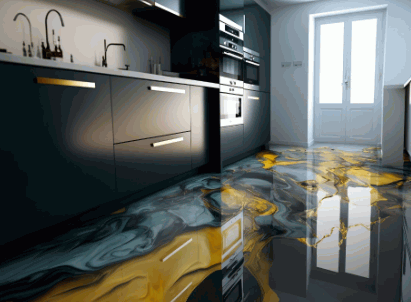
Regular cleaning is essential for preserving the appearance and protective qualities of epoxy flooring in kitchens, requiring gentle non-abrasive cleaners and consistent upkeep to maintain its glossy finish.
Proper cleaning not only enhances the aesthetic appeal but also prolongs the lifespan of the epoxy flooring. To maintain the glossy finish, it is advisable to sweep or vacuum the floor regularly to prevent dirt and debris from accumulating. When it comes to mopping, using a mixture of warm water and a mild detergent specially formulated for epoxy flooring is ideal. Avoid harsh chemicals or abrasive cleaning tools that could damage the epoxy coating. Wiping up spills promptly and avoiding dragging heavy furniture across the surface will help preserve the protective layer.
Non-abrasive cleaners are recommended for cleaning epoxy flooring in kitchens, as harsh chemicals and abrasive materials can damage the protective layer and affect the floor's appearance.
Using gentle cleaning solutions designed specifically for epoxy floors helps preserve the glossy finish and durability of the flooring. Abrasive cleaners can strip away the protective coating, leaving the epoxy vulnerable to stains and scratches.
To maintain the longevity of your epoxy kitchen floor, opt for pH-neutral cleaners or mild dish soap diluted in water. Microfibre mops or soft bristle brushes are ideal tools for cleaning without causing damage. Regularly sweeping or vacuuming the floor can prevent dirt buildup, reducing the need for harsh cleaning methods.
To prevent damage to epoxy flooring in kitchens, it is advisable to avoid placing heavy furniture directly on the surface and to use protective pads or coasters under furniture legs. Sharp objects should also be handled with care to prevent scratches and chips.
By implementing these protective measures, you can maintain your epoxy flooring in top condition for years to come.
In case of any damage to epoxy flooring in kitchens, immediate action is necessary to address the issue, prevent further deterioration, and maintain the floor's protective sealant and appearance.
Failing to attend to damages promptly can lead to more extensive issues, jeopardizing the integrity of the epoxy and potentially requiring costly repairs. To prevent such complications, it is crucial to inspect the flooring regularly for signs of wear, such as cracks, chips, or discoloration.
Once damage is identified, it should be dealt with immediately using appropriate repair techniques to ensure that the protective sealant is intact and the glossy finish of the floor is preserved. By taking quick action, you can prolong the lifespan of your epoxy flooring and uphold its aesthetic appeal.